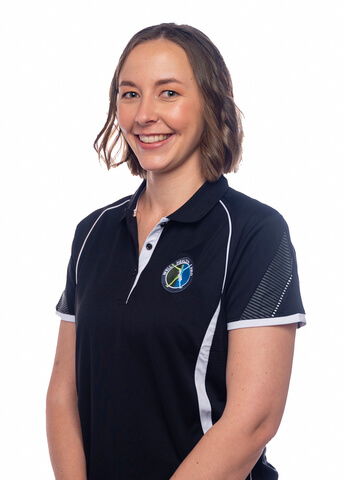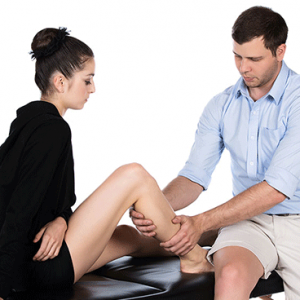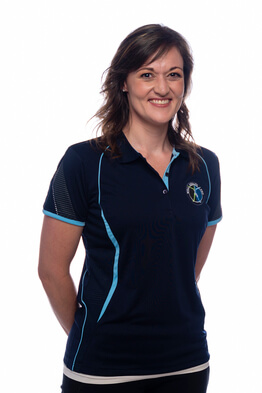Physiotherapists use myofascial release as part of treatment, but do you know what it’s all about? When you do a search on fascia, you’ll find pages and pages about locked fascia, fascia release, muscle pain, anatomy, and all sorts of different treatment techniques. Many of the articles even tries to convince you to think that fascia release treatment will solve all your problems. Don’t let that fool you, though. It’s a great tool if used correctly, but not a miracle cream.
Fascial release techniques are an extremely useful part of therapy used for fast progress, but on its own, it has the same effect as a hour and a half full-body massage. Maybe you feel a bit apprehensive to have your fascia ‘released’, especially when you’re in a lot of pain. It definitely doesn’t sound as nice as a full-body massage. However, you don’t need to be afraid at all, because fascial release techniques are more precise and targeted, but can show faster results when compared to massage.
What exactly is myofascial release?
While fascia is the network of tissue connecting all the different parts of your body, myofascia refers to the fascia in and around your muscles. This network looks like a spiderweb, weaved in-between, through and around all structures in your body. Myofascial release is a soft tissue mobilization technique used to treat restrictions and tension in the fascia. As a spiders web can become knotted in one area, pulls on the strands and fibers to concentrate forces. This can be useful, destructive or overload certain areas. As all your nerves, muscles, joints, and even organs are surrounded by fascia, soft tissue release also influences other systems in your body like blood supply, ease of motion, waste removal and much more.
Why do we use fascia release during treatment?
Your fascia becomes tight, or restricted due to a multitude of factors like injuries, inflammation, poor posture, repetitive movements, or even emotional stress. Tightness in this web-like fascia easily hinders nearby structures ability to do what it should. Apart from the obvious force convergence causing pain, muscle imbalances, overload and, limited range of motion, the hemodynamic state is wrecked causing altered blood supply, poor waste elimination and less nerve responsiveness. Sustained chemical disruption for more than 3 months declines organ function.
Myofascial release is a restoration of forces that accumulates and compounds into a rundown system. These techniques aims to push back the adaption, back to the normal where each component thrives as part of a integrated system. This revision is uncomfortable, but necessary.
We use myofascial release as part of a comprehensive treatment plan to identify and fix it. By releasing tension in the fascia, there’s a reduction in muscle tightness by redistributing forces along the fascial web. Irritated nerves are desensitized and glides freely, while there’s less resistance to movement, better arterial blood supply and waste removal. All of these factors works together in order to let you move better, breaking the vicious cycle of pain and stiffness.
The proximity of organs nearby trauma sites are particularly vulnerable to develop myofascial tightness due to the characteristic of scar tissue forming in the area. A lower back muscle strain to the Quadratus Lumborum or Psoas muscles easily alters breathing and urethral drainage.
Healing effects
- Ease pain
- Restore normal blood supply
- Metabolic waste products removal
- Decrease swelling
- Increase cellular metabolism
- Promote blood supply to injured tissue
- Break down scar tissue and adhesions
- Faster nerve reaction
- Increase tissue flexibility
- Decrease muscle spasm
- Increase cell regeneration
- Stimulate muscle contraction
“Myofascial release – so much more than just a massage.” – Targeted, Goal driven and Precise.
The Technique
Myofascial release is a hands-on, or manual therapy technique. In most cases, the technique uses sustained pressure to release tightness or restriction in the fascia. Application depth, in other words, how much pressure we apply, will depend on your specific problem, phase of healing and tissue resistance.
The practitioner starts by following along the length of the fibers over specific lines, feeling for tightness combined with screening movement that assesses the freedom of movement noting the smoothness, effort and force required. They use their hands to apply sustained pressure to specific areas of your body. Sustained pressure is alternated with broad strokes to scan the tissue again. How much pressure we apply changes during a treatment session, depending on what we find. There might be localized tightness in one area that needs deeper pressure, right next to a very painful structure that needs less intense pressure, or even a more indirect approach. Restrictions in one area may stem from a completely different area, like in plantar fasciitis where the tightness in the myofibril bands your foot and calf developed from a hip replacement and this is merely accommodation.
In some cases, we combine movement with fascial release techniques. Passive movements, like stretches, are when the physiotherapist or an external force moves a body part. Active movements are the upgrade, this is when you’ll contract your muscles to do a specified movement during soft tissue mobilization.
Different types of myofascial release
Direct myofascial release: This technique involves applying sustained pressure directly to the restricted fascial areas. Regularly confused with trigger point release therapy.
Indirect myofascial release: In this approach, the therapist applies pressure in the opposite direction of the restriction.
Foam rolling: This is a technique you can apply at home by rolling over the foam roller. But sacrifices accuracy, quality and lacks precision.
Instrument-assisted myofascial release: Pressure is applied using an external tool or instrument, instead of the treating practitioner’s hands. In order to meet the tissue’s resilience, myofascial tools may be necessary.
Other forms of fascia release that require additional training:
Craniosacral therapy: This is a gentle hands-on technique that focuses on the brain, face and nervous system.
Myofascial activated posture (MAP): MAP is a fascia that emphasizes your own movement rather than using manual techniques for fascia release.
The Lyno Method: A Lyno session always includes 4 specific components, namely Bunkie tests, FROM test, myofascial release, and yellow page wedges.
Musculoskeletal effects
Myofascial release techniques help lengthen and remodel the fascia. Sustained pressure releases tension and restrictions in fascia, improving mobility and range of motion.
Trigger points are painful “knots” in your muscles caused by injury or tension. Myofascial release is often used to release trigger points.
Myofascial release is also used to help break down and soften scar tissue formed as a result of injury, surgery, or repetitive stress. This helps to improve tissue mobility and reduce pain associated with scar tissue adhesions.
Effects on the circulatory system
Myofascial release techniques enhances blood circulation in the treated area. By releasing fascial restrictions and reducing tension in the blood vessels supplying the muscle so it can dilate and, allow better blood flow towards and away from it. Improved circulation brings fresh oxygen and nutrients to the tissues while removing waste products, promoting tissue healing.
The lymphatic system is responsible for removing waste products, toxins, and excess fluid from the tissues. Techniques used for fascial release stimulate lymphatic flow, helping to clear metabolic waste and reducing tissue swelling and inflammation.
What does myofascial release feel like?
Myofascial release sounds like an intense treatment, but you might actually confuse the technique with massage. During treatment we change the intensity and depth of application according to your feedback and the resistance we feel in the tissue. Vigor varies from light pressure to strong deep pressure, or even pain.
Fascial restrictions always unties muscle forces, nerve pathways and joint capsules in the area. This shifts load off the target area to disperse to the surrounding structures, that may temporarily flare up pain. This adaption back to the normal can be uncomfortable, but necessary.
You should feel pressure and a stretching sensation when the technique is applied. Fascial release overlaps with various other treatment techniques, like joint mobilization and nerve mobilization, as part of a complete treatment program. Your physiotherapist gauges the pressure required with maximum effectiveness. In some cases we do need to work into discomfort or some pain to release tight structures, but it’s never unbearable.
How long does fascia release treatment take?
Until the goal is achieved. There is no set duration for fascial release. We use many different techniques during a session, unwind the myofascial system in different ways. The choice of techniques, intensity and duration is determined by your condition and phase of healing. More progressed pathologies require more attention along the path of accommodation and takes a few hours to unravel.
It is important to note that soft tissue release or targeted trigger point release is only one component of a treatment session. Your physiotherapist will determine which combination of treatment modalities will be most beneficial to treat your unique problem and achieve long-term results.
Do I need more than one myofascial treatment session?
There is no fixed number or standard protocol for the frequency or duration of fascia release sessions because the scope of accommodation is so vast. In some cases, a single session may provide immediate relief or improvement. However, when used in isolation, these effects remain temporary. A series of sessions is necessary to untie deeper restrictions or chronic conditions are particularly challenging to untangle. Chronic conditions cause long-standing restrictions and more complex adaptions that require a more extended treatment plan with regular sessions over a period of time.
Your physiotherapist will assess your progress and adjust the treatment plan accordingly. The frequency and number of myofascial release sessions needed depends on several factors, including your diagnosis, goals, and response to treatment.
Great results is already visible after 6-8 sessions over a period of 12 weeks. For a start you’ll attend physio twice during your first week, once a week for the next two weeks, and then once every second week in the next month.
What can I do at home to ensure my treatment is effective?
Consistency and regularity in attending sessions, following your physiotherapist’s advice with regard to activity changes, and making sure to perform your home exercises contributes to the overall effectiveness and sustained benefits of fascia release therapy.
Your physiotherapist guides you on the dos and don’ts for your specific problem. These can include:
- Self-massage techniques using a massage ball or foam roller can be helpful to use at home in between sessions.
- Gentle stretching, regular movement, and exercise to improve flexibility, and maintain the gains achieved through myofascial release.
- Heat packs are useful to help relieve discomfort you may have after or between sessions.
Cost of myofascial release
There is a specific medical aid rate for myofascial release, but this soft tissue technique is only one part of a consultation. Your physiotherapy treatment always includes various other components and modalities.
Even though myofascial release is a useful part of treatment, it won’t fix your problem. The complete package of techniques combined with expert eyes and advice adds up to the full value of your treatment session.
Medical Aid Code – 303
The myofascial release treatment code 303 is used when myofascial release is used during treatment. This is one of our most versatile techniques, and can overlap with other techniques or be used to transition from one technique to the next. Most good medical aids offer re-imbursement for myofascial release.
Does it make a difference to have an experienced physiotherapist apply fascia release techniques?
Experienced medical practitioners have a thorough understanding of the anatomy, physiology, and biomechanics of the fascial system. They have honed their skills in various myofascial release techniques and are proficient in applying the appropriate amount of pressure, duration, and direction to address fascial restrictions effectively. An experienced physiotherapist will tailor the treatment to your specific goals and provide a more targeted and precise approach.
Myofascial release done by a non-medical professional may transfer load to other areas that eventually also fails. Be cautions in why a technique must be applied and to what purpose. Grasping the reasoning behind the use of myofascial release is more important than the application.





